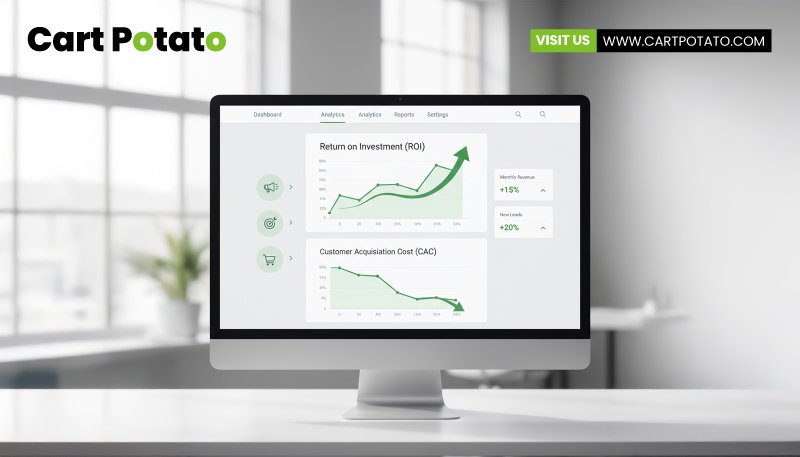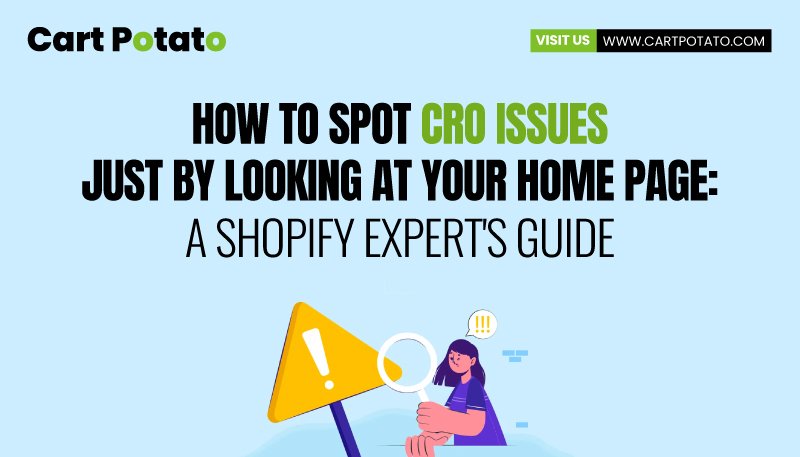
The Ultimate Guide to Shopify Landing Pages
In the world of e-commerce, first impressions matter. A well-crafted Shopify Landing Pages can make all the difference in converting visitors into customers. This blog will explore what a landing page is, how it differs from a homepage, the types of landing pages, their benefits, best practices, and showcase an example of an effective landing page designed by us. Whether you’re looking for landing page design services in India or seeking to partner with a landing pages company in India, this guide has you covered.
What is a Landing Page?
A Shopify Landing Pages is a standalone web page created specifically for a marketing or advertising campaign. It’s where a visitor “lands” after clicking on a link in an email, or ads from Google, YouTube, Facebook, Instagram, Twitter, or similar places on the web. Unlike web pages, which typically have many goals and encourage exploration, landing pages are designed with a single focus or goal, known as a call to action (CTA).
Landing Page vs. Homepage: Key Differences
Though both landing pages and homepages are vital components of a website, they serve distinct purposes and have different designs and functionalities.
Goals
Homepage:
The primary goal of a homepage is to provide a comprehensive overview of your brand. It serves as a gateway, encouraging customers to interact with your company in various ways. A homepage typically includes multiple CTAs (calls to action) to guide visitors toward different actions, such as exploring products, reading blog posts, or contacting customer service. It communicates your company’s vision, story, and the breadth of your offerings.

Landing Page:
In contrast, a landing page has a singular focus—driving visitors toward one specific goal. Whether it’s encouraging visitors to make a purchase, sign up for a newsletter, download a resource, or submit their information, every element on a landing page is designed to lead the customer to complete that particular action.

Design
Homepage:
Homepages are designed to facilitate exploration and provide detailed information about your company. They often feature multiple sections, easy-to-find navigation bars to subpages, and additional elements like customer reviews, mission statements, blog posts, videos, job postings, contact information, and social media links. The design is more complex and varied to support a wide range of interactions.
Landing Page:
Shopify Landing Pages are streamlined and focused on guiding the audience towards a single action. They typically have fewer sections and links compared to homepages, minimizing distractions and preventing visitors from navigating away from the core objective. Essential elements include a clear headline, concise product benefits, social proof, pricing information, and a strong call to action (CTA).
Call-to-Action Buttons
Homepage:
A homepage may include multiple CTAs to encourage visitors to explore different areas of the site. These CTAs might direct users to product pages, blog articles, service descriptions, or contact forms, helping to promote a broad engagement with the site.
Landing Page:
Every landing page should feature a prominent CTA button designed to prompt immediate action, such as filling out a form, signing up for a subscription, or making a purchase. The CTA copy is typically succinct (e.g., “Learn More” or “Get Started”), and it’s accompanied by complementary text that reinforces the action. For example, a clothing store might use a CTA like “Get 15% Off” alongside a sign-up form stating, “Save 15% off your first order when you sign up for our newsletter today.” The placement of the CTA is crucial, often positioned above the fold to ensure visibility as soon as visitors land on the page.
Types of Landing Pages
There are several types of landing pages, each serving a unique purpose:
- Lead Generation Landing Pages: Used to capture visitor information, like email addresses and names, in exchange for something of value, such as an eBook or a free trial.
- Click-Through Shopify Landing Pages: Acts as a warm-up for the final conversion, providing detailed information about a product or offer and leading to another page where the visitor can complete the action.
- Product Landing Pages: Focused on showcasing a specific product and encouraging visitors to make a purchase.
- Splash Pages: Often used as a pre-landing page, providing a brief introduction or announcement before directing visitors to the main landing page or site.
Benefits of Landing Pages
Landing pages offer numerous advantages for businesses:
- Increased Conversions: By focusing on a single CTA, landing pages eliminate distractions, making it easier for visitors to take the desired action.
- Better Targeting: Tailored to specific audiences and campaigns, landing pages can address the unique needs and pain points of different customer segments.
- Improved Metrics: Landing pages allow for precise tracking of campaign performance, providing valuable insights into what works and what doesn’t.
- Cost-Effective Marketing: With higher conversion rates, landing pages can lead to better returns on investment (ROI) for your marketing campaigns.
Best Practices for Landing Pages
To create effective landing pages, consider the following best practices:
- Clear and Compelling Headlines: Your headline should immediately convey the value of your offer and grab the visitor’s attention.
- Concise and Persuasive Copy: Keep your content focused on the benefits and unique selling points of your offer.
- Strong Call to Action: Your CTA should be clear, compelling, and prominently placed on the page.
- Visual Appeal: Use high-quality images, videos, and graphics to make your landing page visually appealing and engaging.
- Social Proof: Include testimonials, reviews, or case studies to build trust and credibility with your visitors.
- Mobile Optimization: Ensure your landing page is fully responsive and looks great on all devices.
Example of an Effective Landing Page
At Cart Potato, a leading Shopify Landing Pages company, we pride ourselves on creating high-converting landing pages. One of our recent projects involved designing a landing page for True Native, an online nutrition brand that delivers a wide variety of products to its customers.

Our team focused on:
- Crafting a compelling headline that highlighted the unique value proposition.
- Using high-quality images and concise, persuasive copy to engage visitors.
- Implementing a strong CTA that encouraged immediate action.
- Adding social proof through customer testimonials and reviews.
The result was a visually stunning, user-friendly landing page that significantly increased conversions for our client.
Insights from SEO Expert Neil Patel
SEO expert Neil Patel emphasizes the importance of user experience in landing page design. According to Patel, “A landing page needs to be simple yet engaging, with a clear focus on the user’s needs and a straightforward path to conversion. Including elements like reviews, videos, and structured data can significantly boost your page’s performance and SEO traffic.”
What High-Performing Product Detail Pages Have in Common
As per Neil Patel’s recent LinkedIn Post, he analyzed 119 product detail pages (PDPs) that saw a significant increase in SEO traffic over the past 12 months. Here’s what they all had in common:
- Reviews: Every PDP contained reviews, with a minimum of 104 and up to 8,158 reviews.
- Ratings: Average product rating of 4.6 stars, with all pages having at least a 4-star rating.
- Product Images: Each page had multiple product images, averaging 4 images per page.
- Videos: 77.3% of the PDPs included a video.
- Layout: Product images were placed on the left, with details on the right.
- Internal and External Links: Each PDP had an average of 4.4 internal links and 21.7 backlinks.
- Structured Data: Utilized on all pages.
- Domain Authority: The average domain authority was 62.
By implementing these best practices and focusing on user experience, you can create high-performing landing pages that drive conversions and enhance your e-commerce success.
Conclusion
Landing pages are a powerful tool for any e-commerce business looking to boost conversions and achieve better ROI from marketing campaigns. By understanding the key differences between landing pages and homepages, the types of landing pages, their benefits, and best practices, you can create landing pages that drive results.
If you’re seeking professional landing page design services in India, look no further. At Cart Potato, we are committed to helping businesses create effective landing pages that convert. Contact us today to learn more about our services and how we can help you achieve your marketing goals.
Talk to Our Experts
Ready to elevate your online presence with high-converting landing pages? Reach out to Cart Potato, the premier landing pages company in India. Our team of experts is here to help you create stunning landing pages that drive engagement and conversions.
FAQs About Landing Pages
Q1: What is a landing page?
A landing page is a standalone web page designed specifically for a marketing or advertising campaign. It’s where a visitor lands after clicking on a link from an email, ad, or other digital sources. Its primary purpose is to drive visitors toward a single goal or call to action (CTA).
Q2: How does a landing page differ from a homepage?
While a homepage offers a broad overview of a company’s products, services, and values, a landing page is focused on a specific goal or CTA. Homepages contain multiple CTAs and navigational elements, whereas landing pages are streamlined to minimize distractions and drive conversions for one specific action.
Q3: What are the types of landing pages?
There are primarily two types of landing pages:
- Click-Through Landing Pages: Aim to persuade visitors to click through to another page, such as a product detail page.
- Lead Generation Landing Pages: Designed to capture visitor information through forms in exchange for something of value, like a newsletter subscription or a downloadable resource.
Q4: What are the benefits of using landing pages?
Landing pages offer several benefits, including:
- Increased conversions due to focused CTAs.
- Targeted messaging that ensures relevant content for visitors.
- Better data collection for marketing insights.
- Enhanced SEO, as optimized landing pages can improve search engine rankings.
Q5: What are some best practices for designing landing pages?
Best practices for designing landing pages include:
- Using a clear and compelling headline to grab attention.
- Incorporating strong visuals, such as high-quality images and videos.
- Writing concise and persuasive copy that highlights key benefits.
- Featuring a prominent CTA button positioned above the fold.
- Including social proof like customer reviews and testimonials.
- Ensuring the page is mobile-optimized for a responsive design.
Q6: Can you give an example of an effective landing page?
At Cart Potato, we developed a high-converting landing page for an e-commerce client. It included:
- High-quality images displayed on the left.
- Detailed product information on the right.
- Over 200 positive reviews with an average rating of 4.8 stars.
- An engaging video showcasing the product in use.
- A strong CTA positioned above the fold, encouraging immediate action.
Q7: How can Cart Potato help with landing page design?
Cart Potato offers top-notch landing page design services in India. As a leading landing pages company, we specialize in creating optimized and effective landing pages tailored to your business goals. Contact us today to learn more about our services and how we can help elevate your e-commerce game.
Q8: What common features do high-performing product detail pages (PDPs) share?
High-performing PDPs typically include:
- Reviews, with a minimum of 104 and up to 8,158 reviews.
- High average product ratings of 4.6 stars.
- Multiple product images, averaging 4 images per page.
- Videos, with 77.3% of PDPs including one.
- Structured data for better SEO.
- High domain authority, averaging 62.
- Internal and external links, averaging 4.4 internal and 21.7 backlinks.








